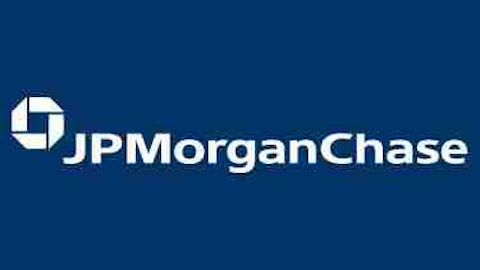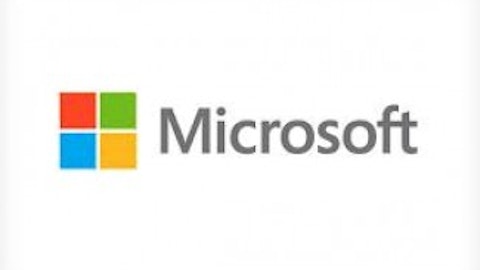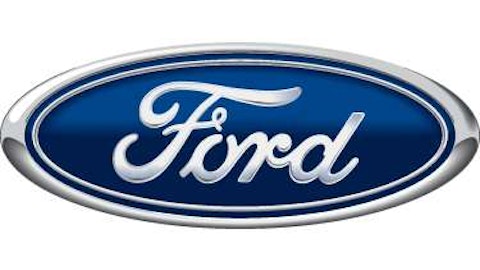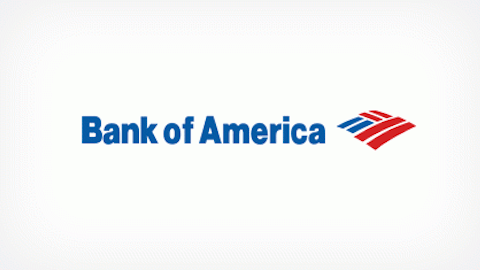On this day in economic and business history…
William C. Durant founded General Motors Company (NYSE:GM) on Sept. 16, 1908.

Durant entered the auto industry with a solid record of transportation entrepreneurialism — but of the wrong type: He had headed the world’s largest horse-drawn-wagon manufacturer in the late 1800s. His anti-auto predilections were well known. Compared to horses, Durant found cars to be noisy, smelly, and dangerous — which were all fair accusations to make against the few primitive vehicles then on the roads. But Durant was, above all, a businessman, and he knew which way the winds were blowing. Dr. Burton Folsom of the Mackinac Center explores the events that led up to GM’s creation:
In 1904, after test-driving a Buick over the potholes in Flint and the mud of the countryside, he took the challenge of building the car industry almost from scratch. Durant the salesman sprang into action. He entered the Buick in a New York auto show — and came home with orders for 1,108 cars: not bad considering that only 37 Buicks had ever been made. In 1908, after just four years making cars, he had the best-selling car in the business. The carriage king had become the auto genius.
Durant and his main rival, Henry Ford, both envisioned mass appeal for the car. Ford , however, thought his company should be built around one standard car, his low-priced, no frills Model T. Durant, from his years in the carriage business, knew that if he were to prevail as the auto leader he needed many different types of vehicles to cater to different incomes and tastes. He scoured the country with the idea of having Buick merge with other companies that could carve out a niche in the auto market. He bought Cadillac for its luxury cars. He formed General Motors in 1908 by consolidating thirteen car companies and ten parts-and-accessories manufacturers.
Within days, the company’s share offerings had raised $12 million, which was a pretty impressive show of investor confidence for a company begun with only $2,000 in working capital. Buick, the early centerpiece of Durant’s budding empire, produced almost 9,000 vehicles in 1908 — 3,000 more than Ford.
General Motors Company (NYSE:GM)’s strategy of building diverse brands, while initially successful in a very small industry, took time to catch on with the mass market. Durant’s shareholders soon pushed back against his overly aggressive acquisition strategy, and a failed effort to buy Ford itself led to his ouster in 1911. That year, Durant founded Chevrolet, and in 1918 he engineered a masterful “buy-in” that brought Chevy into GM’s stable and also gave him enough shareholder control of the company to call the shots once again. General Motors Company (NYSE:GM)’s shares peaked in 1919 with the rest of the auto industry, but after a moderate recession the company began to grow rapidly throughout the 1920s.
The Roaring ’20s became General Motors Company (NYSE:GM)’s coming-out party. Durant lost control of the company in 1920, but its new leadership guided GM through many notable milestones during this time. GM produced its 1 millionth Chevy in 1923. Two years later, the company joined the Dow Jones Industrial Average for what would become an 84-year tenure. In 1927 it surpassed Ford in total sales for the very first time, and by 1931 it would claim the sales lead for good. GM remained atop the auto industry until the debt-fueled financial crisis of the 2000s, which forced the century-old company into bankruptcy (and out of the Dow) in 2009.
The house of Morgan divided
General Motors Company (NYSE:GM) wasn’t the only bastion of American business to begin on Sept. 16. Morgan Stanley (NYSE:MS), an investment-banking offshoot of the indomitable firm of JPMorgan Chase & Co. (NYSE:JPM), set up shop at 2 Wall Street on Sept. 16, 1935. Morgan Stanley (NYSE:MS)’s split from the parent firm became a necessity after the passage of the Banking Act of 1933, popularly known as Glass-Steagall. This radical legislation barred investment and commercial banking operations under the same roof, and the House of Morgan was among the largest financial firms in both fields.
The bank put off separation as long as possible, but by 1935 it was clear that there would be no political salvation to keep J.P. Morgan whole. In August of 1935 the leaders of J.P. Morgan met at CEO Thomas Lamont’s farm in Maine to hash out a new corporate strategy. There, it was decided that J.P. Morgan would remain a manager of deposits and loans, while Morgan scion Henry S. Morgan would partner with bank executive Harold Stanley to form a new investment bank. Ron Chernow, writing in The House of Morgan, expresses well the popular bewilderment at this decision:
Fifty years later, the choice seems strange. Between 1919 and the [1932] Pecora hearings, Morgans had sponsored $6 billion in securities for blue-chip companies and foreign governments. The Morgan cachet on bond issues brought in collateral banking business. … As Russell Leffingwell had told Lamont, “I believe further that our securities business is a necessary feeder business, and that without it the banking business would in time dry up.” … The world of commercial banking … seemed prosaic for a bank of such rarefied tastes and as active in secret diplomacy as J.P. Morgan and Company.
Close ties to J.P. Morgan gave Morgan Stanley (NYSE:MS) immediate heft. Officers of the new firm held most of the $500,000 in common stock issued, and of an additional $7 million in capital raised from the sale of nonvoting preferred stock, $6.6 million came from J.P. Morgan partners. The “splendid bastard” Morgan Stanley, as Chernow writes, opened to immense fanfare. On its first day in operation, more than 200 floral displays arrived from colleagues and competitors on Wall Street. Much of the new investment bank’s business continued to rely on J.P. Morgan, and major Morgan Stanley deals were frequently handled at Morgan’s 23 Wall Street, rather than at Morgan Stanley’s 2 Wall Street headquarters.
Morgan Stanley (NYSE:MS) remained at the top of the investment-banking world for years. It gained more independence in the 1940s following a restructuring but continued to handle many of the largest stock and bond offerings in the U.S. throughout the postwar years. Although Morgan Stanley suffered during the late-2000s financial crisis, it survived intact after converting to a bank holding company to borrow funds from the Federal Reserve. Today, Morgan Stanley (NYSE:MS) manages more than $300 billion in assets and continues to be one of the key players in the IPO market: Since the 1980s, it has been behind the public offerings of many of Silicon Valley’s most notable tech companies.
We’re not gonna take it
J.P. Morgan’s 23 Wall Street headquarters was involved in another, far less auspicious event on Sept. 16. One of the deadliest acts of terrorism in American history took place in front of 23 Wall Street when a horse-drawn wagon stuffed with dynamite and shrapnel exploded there at noon on Sept. 16, 1920. More than 100 people were injured, and 38 died. Many of those harmed or killed were young Wall Street lackeys employed by the House of Morgan or other firms. Trading was halted in an effort to avoid a panic. Most of the interior of J.P. Morgan’s headquarters was wrecked by the blast.
An investigation went on for years, but the bombers were never found. Communists and anarchists became scapegoats, but none were arrested and brought to trial. The Wall Street bombing remained the deadliest terrorist strike on U.S. soil until the Oklahoma City bombing of 1995.
Currency wars
George Soros broke the Bank of England on Sept. 16, 1992. This event, which was later estimated to have cost the British central bank 3.3 billion pounds, was the culmination of more than a decade of shaky British fiscal policy regarding the European Exchange Rate Mechanism. It also brought to a head the long-standing conflict between pro-monetary-union factions inside the British government and anti-union traders and currency speculators. Britain’s The Guardian reports on the highlights of that day:
George Soros’s Quantum Fund led a field of speculators who borrowed UK gilts only to sell them and buy them back later at cheaper prices. They repeated the trick every few minutes, making a profit each time. Soros said later he had made one billion pounds from selling sterling he didn’t own.
By mid-morning the selling was so intense that Bank of England officials were buying two billion pounds of sterling an hour.
The Prime Minister, John Major, was staying in Admiralty house in Whitehall. He was told about the frenzy of selling and convened a meeting of key ministers. He talked about the possibility of interest rate rises beyond the already sky-high 10% and the need for further interventions by the Bank of England. Senior Conservatives Michael Heseltine, Douglas Hurd and Kenneth Clarke joined Major and the chancellor, Norman Lamont, who was on the end of a phone.
At 11 a.m. they agreed to push up interest rates to 12%.
These attacks kept pushing the pound out of a “currency band” that was meant to maintain its exchange rate at specific levels relative to other European currencies. The British central bank’s reserves ran low combating the speculators, and by the end of the day the British government had to choose between a virtual death spiral of currency intervention or leaving the monetary union. The British chose to leave. After reworking its economic policy for a non-union existence, Britain’s sluggish economy began to grow again, giving some weight to the criticisms that the ERM had really been an “Eternal Recession Mechanism.”
The British had currency problems as an obstacle to economic growth in the 1990s, but the U.S. has its own set of issues holding back a full recovery from the financial crisis. George Soros’ longtime peer Warren Buffett has called one particular problem “the tapeworm that’s eating at American competitiveness,” but you can be sure that he has found ways to capitalize on the few companies setting themselves up to succeed from its imminent eradication. Find out which companies are really ahead of the competitive curve, and how you can profit, in our free report: “What’s Really Eating at America’s Competitiveness.”
The article The Creation of an Industrial Titan and an Investment-Banking Colossus originally appeared on Fool.com.
Fool contributor Alex Planes holds no financial position in any company mentioned here. Add him on Google+ or follow him on Twitter @TMFBiggles for more insight into markets, history, and technology.The Motley Fool recommends Ford and General Motors. The Motley Fool owns shares of Ford and JPMorgan Chase & Co (NYSE:JPM)..
Copyright © 1995 – 2013 The Motley Fool, LLC. All rights reserved. The Motley Fool has a disclosure policy.





